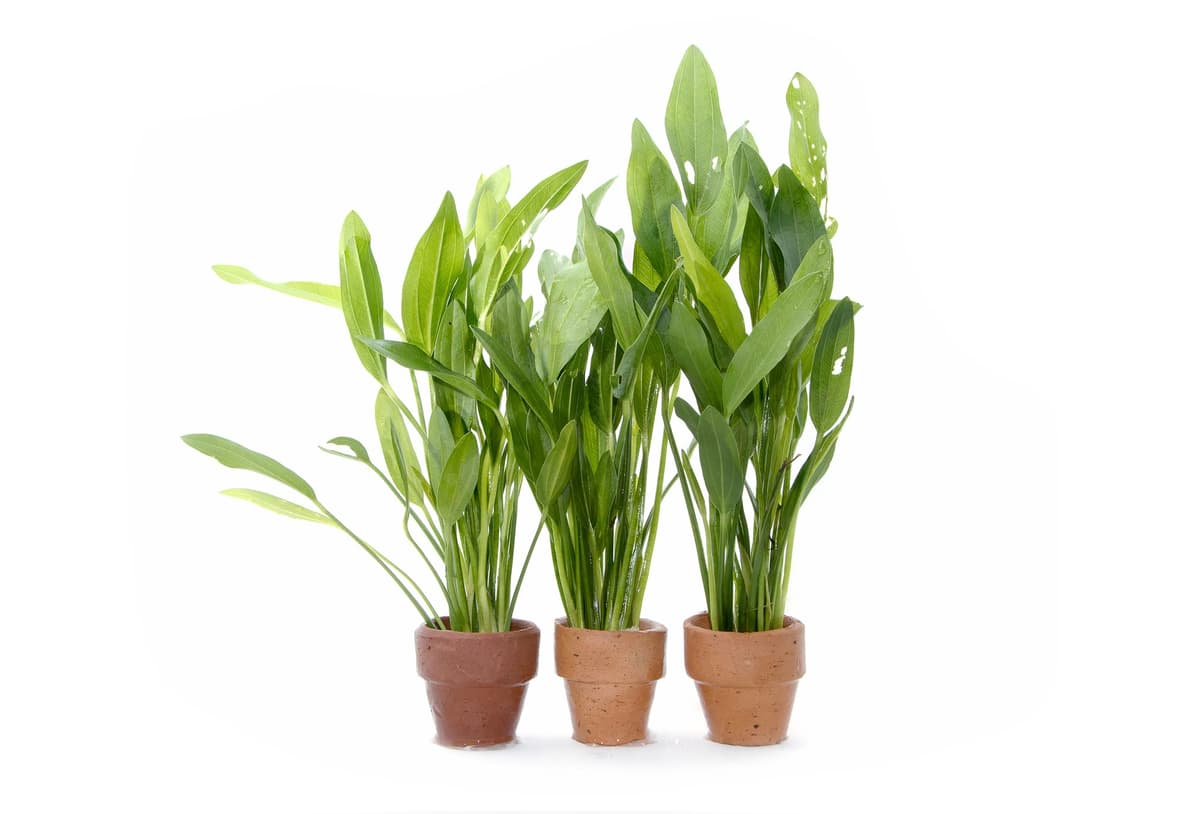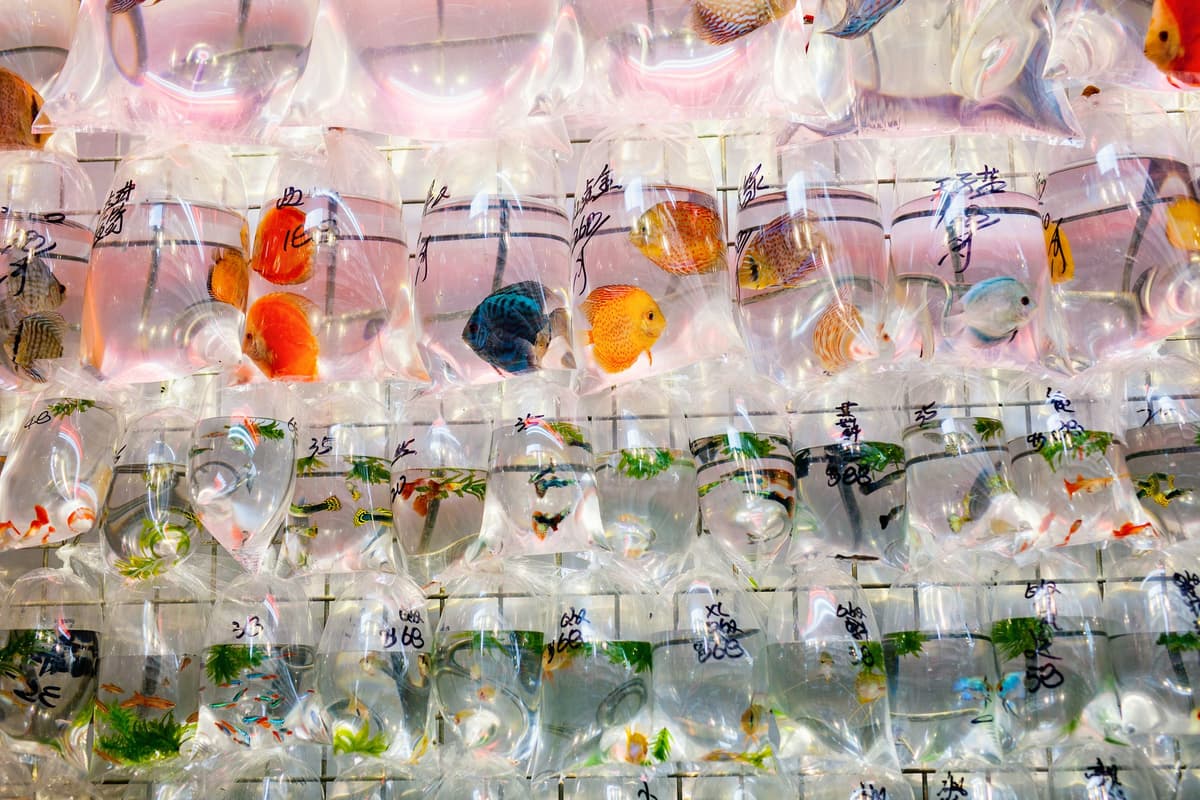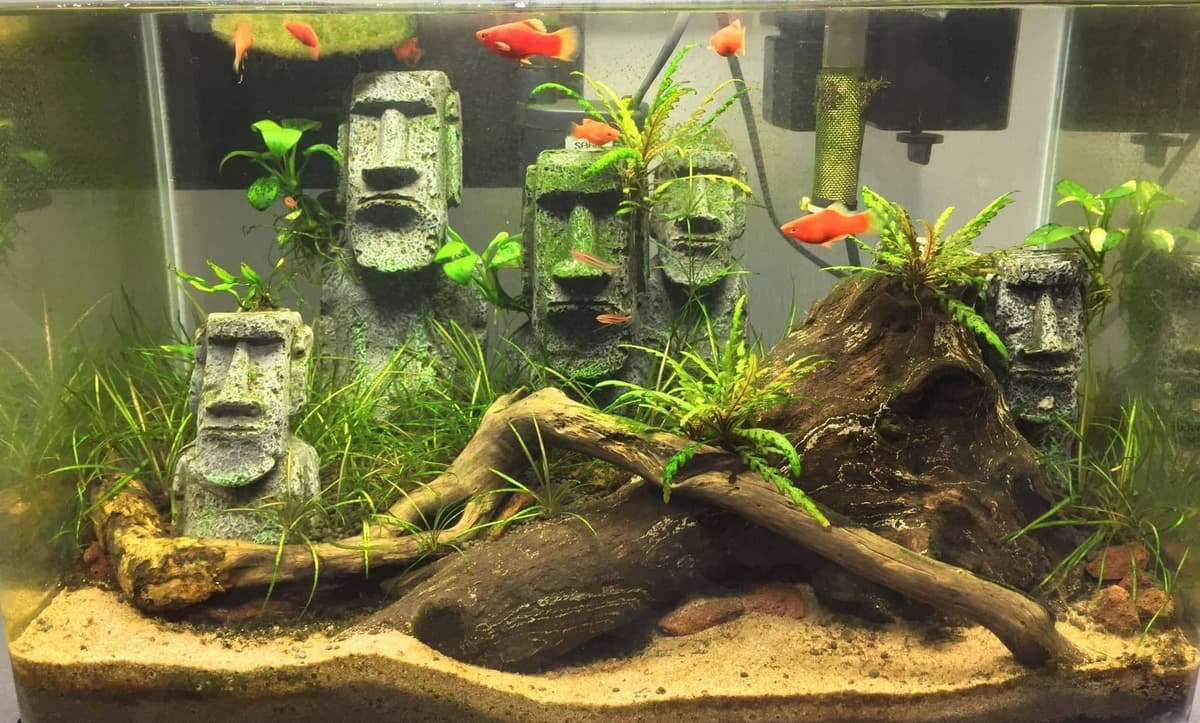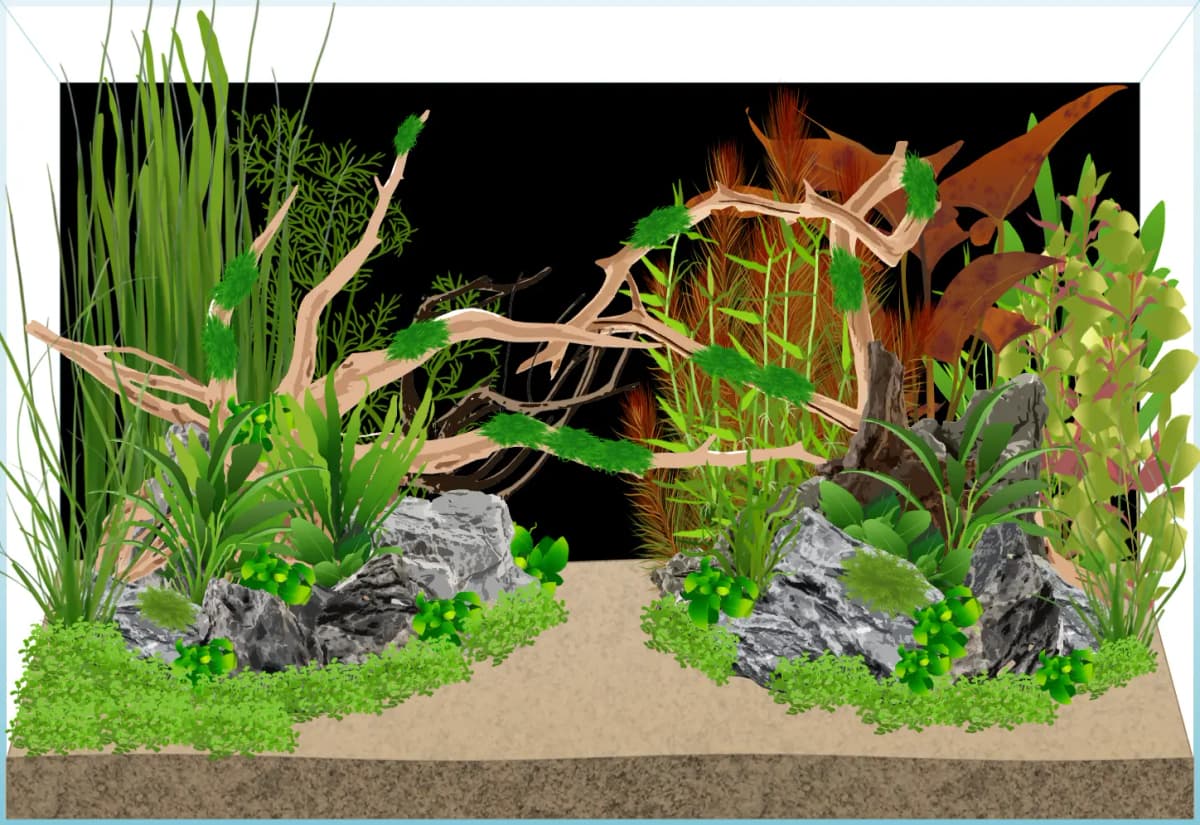What is the Total Cost of Setting Up an Aquarium?
Many new fishkeepers are surprised by just how expensive setting up an aquarium can be. How much will it really cost? There’s no single answer — it depends on your setup choices — but we can make a realistic estimate by working from a common beginner scenario. This way, you can budget wisely and avoid nasty surprises down the road.
Our Assumptions for This Estimate
- Starting from scratch — no existing equipment or supplies.
- Tank size — a 20-gallon freshwater tank. This size offers a good balance of stability, stocking options, and manageable maintenance for beginners. Smaller tanks are tempting but can be more work and more prone to problems.
- No stand required — we’ll assume you have a sturdy surface ready to hold the aquarium.
- Community setup — a peaceful mix of small tropical fish and a handful of easy live plants.
One-Time Setup Costs
Aquarium Tank ($100–$250) – Your tank is the foundation of the hobby, so invest in one that’s durable, leak-free, and made from quality glass or acrylic. At 20 gallons, you’ll have enough water volume to absorb minor mistakes and keep your fish comfortable, but it will still fit in most living spaces. Starter kits often bundle a light and filter, which can save $50–$100 compared to buying separately.
For a high quality aquarium we recommend Landen 23 Gallon ($269.99)
For a very cheap All-in-one kit checkout the Tetra Colourfusion 20 Gallon ($119.14)
Leveling Mat (Free) – Many tanks include a foam mat to place underneath, preventing uneven pressure on the glass. If yours doesn’t, a cheap piece of foam, yoga mat, or even carpet underlay can do the job and protect your investment.
Hood / Lid ($0–$10) – A lid helps keep fish from jumping, reduces evaporation, and keeps dust or curious pets out. Many starter kits include one, but if you buy a bare tank, a glass or plastic condensation cover is an inexpensive addition.
Filter ($30–$40+) – The filter is your aquarium’s life support system, removing waste and housing beneficial bacteria. Hang-on-back filters are popular for beginners because they’re reliable, easy to maintain, and affordable. Make sure to choose one rated for your tank size or slightly larger. (See our guide on choosing the right filter)
For a simple and cheap hang-on-back filter checkout the Fluval C2 Filter ($32)
Lighting ($50–$70) – Lighting affects both the look of your tank and the health of your plants. A good LED aquarium light will showcase your fish’s colours and help plants thrive. While cheaper lights exist, poor quality can mean dim tanks or stunted plants, so this is one area where a small splurge pays off.
A good value choice is the Hygger 18W bracket light ($38.99)
Heater ($15–$40) – Tropical fish need stable temperatures, usually around 75–80°F. A 100W adjustable heater suits a 20-gallon tank. Reliability matters — a faulty heater can stress or even kill fish.
We recommend the EHEIM Jager 75W heater ($30)
Thermometer ($5–$10) – A simple stick-on or floating thermometer lets you monitor temperature at a glance. Catching a drop or spike early can prevent bigger problems.
Substrate ($15–$40) – Your choice here affects the look of the tank and plant health. Standard aquarium gravel is the cheapest, but plant-focused setups may benefit from nutrient-rich substrates. A rough guide is 1 lbs per gallonm, so expect to need around 20 lbs for a 20-gallon tank.
Decorations ($0–$50+) – Rocks, driftwood, and ornaments provide hiding places, which make fish feel secure. While store-bought options are attractive, they can be pricey — collecting your own (and properly cleaning and sterilising it) can save you a lot.
Background (Free–$10) – A background can make your fish stand out and hide wires or tubing. The cheapest option is to paint the back of your tank or tape on a sheet of coloured card.
Live Plants ($40+) – Hardy, beginner-friendly plants like Java fern or Anubias add beauty, help absorb nitrates, and compete with algae. Buying in small batches lets you see which species thrive in your setup. (For recommendations, see our best beginner plants guide.)
Ultimately you could spend hundreds here if you went for a complete planted aquarium. Many fish stores sell bundles with multiple aquarium plants included.
Fish ($60–$70) – Stocking a community tank with peaceful fish like neon tetras, rasboras, and corydoras spreads the cost while keeping variety. Many stores offer discounts for buying in groups, so plan your stocking list before you shop. (Check our beginner fish guide for ideas.)
Water Conditioner ($10) – Tap water contains chlorine or chloramine, which is harmful to fish. A bottle of water conditioner neutralises these instantly and lasts months.
API is a trusted brand that have many fish treatment products like this Tap Water Conditioner ($8.45)
Beneficial Bacteria ($5–$10) – Optional but handy, these bottled cultures jump-start your tank’s nitrogen cycle, making it safer for fish sooner.
Test Kit or Strips ($12–$25) – Regular testing lets you monitor ammonia, nitrite, nitrate, and pH. Test strips are quick and affordable; liquid kits are more accurate but cost a bit more upfront.
We recommend API's 5 in 1 Test Strips ($12.98)
Fish Food ($10) – A tub of quality flakes or pellets can last months. Variety foods like frozen or freeze-dried treats can be added later as a supplement.
Gravel Vacuum ($8–$15) – An essential tool for water changes, removing waste and debris without draining your whole tank.
Algae Scrubber & Net (~$15) – Keeps glass clean and helps safely move fish if needed. These basic tools last for years with good care.
Bucket ($5) – Dedicate a 5-gallon bucket to aquarium use to avoid soap or chemical contamination from household cleaning.
💰 One-Time Setup Total: If buying products separately you're looking around $400–$600+ for a complete, safe 20-gallon setup.
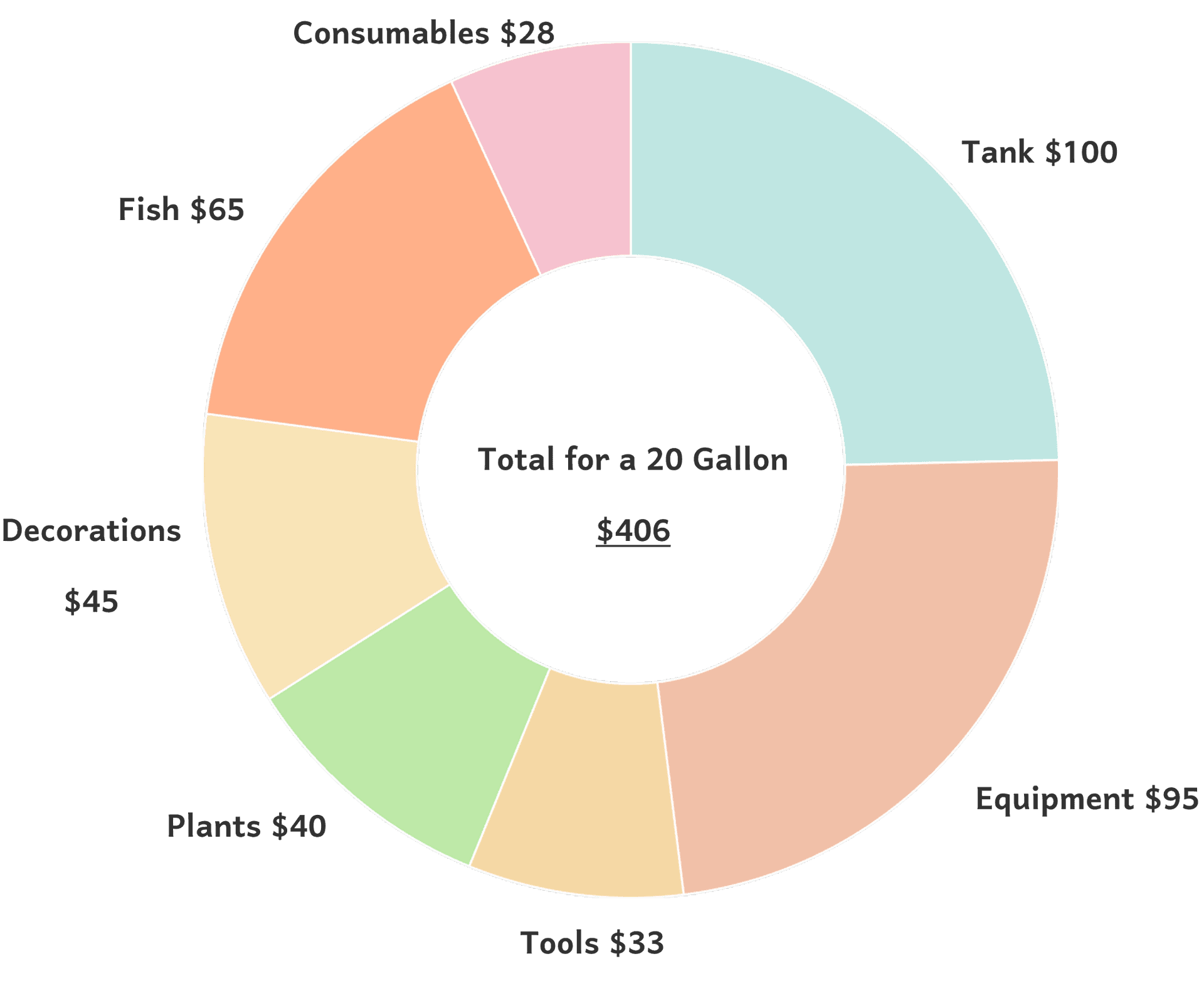
Ongoing Costs
While the big expense is upfront, running a tank isn’t free:
- Electricity ($5–$10/month) – Filters run 24/7, heaters cycle on and off, and lights are usually on 6–8 hours a day. Costs depend on your local rates and how energy-efficient your equipment is.
- Water & Conditioner ($1–$2/month) – Water is cheap; the main expense is conditioner used during weekly water changes. But a single bottle can last you months.
- Fish Food ($2–$3/month) – Averaged out, food is inexpensive for a small community tank.
- Testing & Additives ($1–$2/month) – Testing less often as your tank matures keeps costs low; plant fertilisers or medications are occasional extras.
💵 Ongoing Total: Around $10–$15/month ($120–$180/year).
Cost-Saving Tips
- Look for Kits: Bundles with a tank, filter, heater, and light can save $50–$100.
- Buy Used: Second-hand tanks and equipment can be a fraction of the price — just clean them properly.
- DIY Decor: Safe, collected rocks and driftwood are free if sterilised properly.
- Start Hardy: Tough fish and plants avoid costly losses.
- Join the Community: Local fish clubs often give away plants or gear when no longer needed.
- Invest Where It Matters: Filters and heaters are worth buying new and reliable.
Final Thoughts
As you can see, the costs vary greatly depending on your situation, what you can source for free, and how much you want to stock your aquarium.
Many people underestimate both the initial expense and the ongoing costs of keeping an aquarium running. Unfortunately, this often leads to poor quality of life for their fish. It’s not a cheap hobby, and cutting corners in the wrong places can have serious consequences — so think carefully before diving in.
In short, a realistic budget for a beginner’s 20-gallon aquarium is around $400 upfront, plus $10–$15 per month in maintenance. It’s an investment, but with planning, patience, and smart shopping, you can save money while still providing your fish with a healthy home.
If you opt for an all-in-one kit and the cheapest products listed above, you’re looking at around $250–$300 total for a 20-gallon aquarium. If you invest in quality equipment that will last (which we strongly recommend if your budget allows), the price can quickly climb to $600 or more.
The payoff? A slice of nature in your living room, years of enjoyment, and the satisfaction of watching your aquatic pets thrive.

